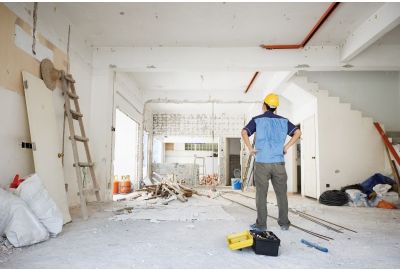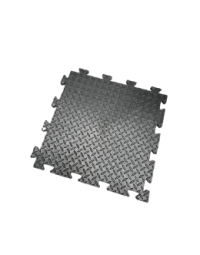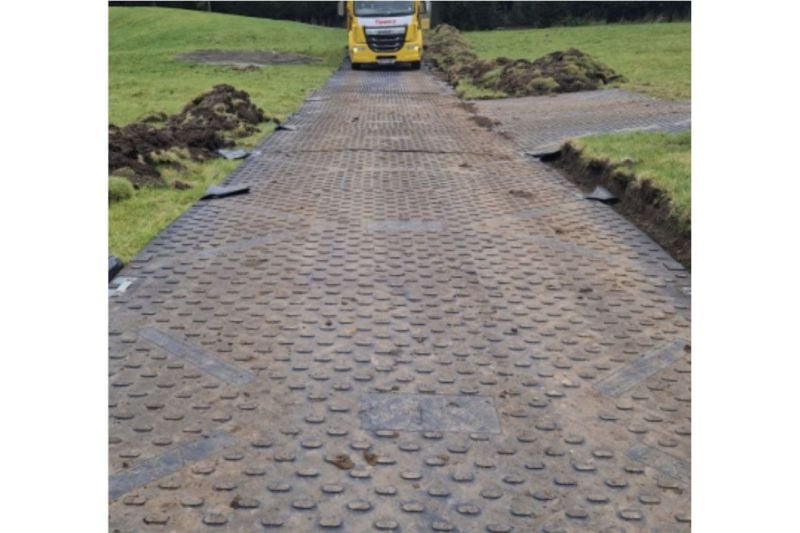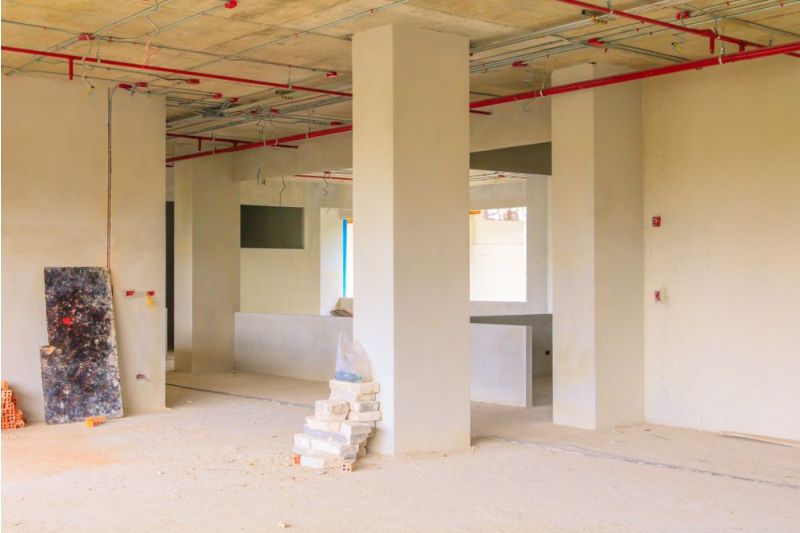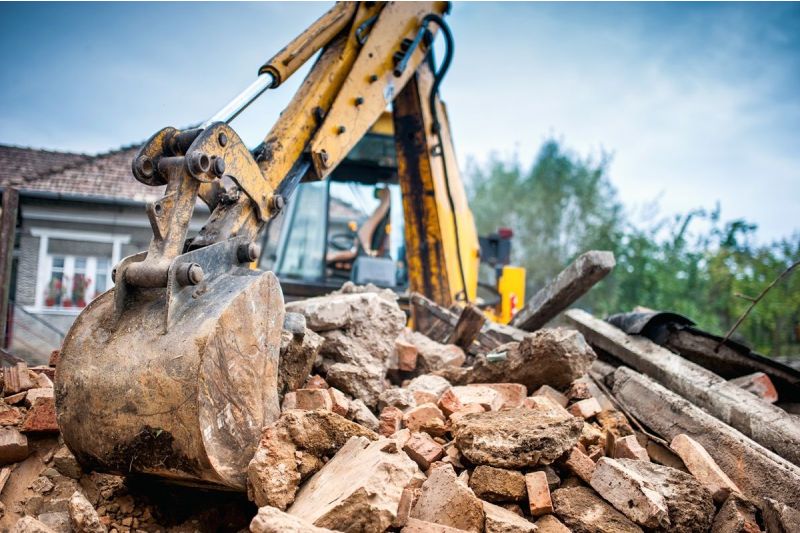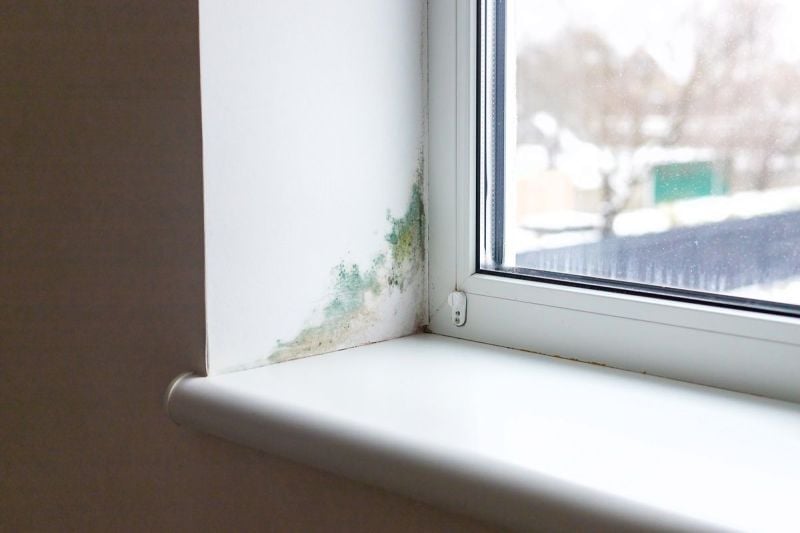Protecting the ground from damage is essential in construction, especially in areas where machinery, vehicles, and foot traffic are constantly moving. External ground protection measures ensure that outdoor surfaces remain intact, prevent environmental harm, and promote safety.
However, common mistakes in this area can lead to costly repairs, environmental issues, or even project delays. By understanding and avoiding these pitfalls, construction professionals can ensure that their sites are not only efficient but also safe and compliant.
In this guide, we have looked at some common mistakes to watch out for when it comes to external ground protection.
Choosing the Wrong Type of Ground Protection Mat
Ground protection mats are a vital component in preventing damage to sensitive ground. However, selecting the wrong type of mat for the job can lead to problems. For instance, light-duty mats may not be suitable for heavy equipment, and over time, this mismatch can result in ruts, soil compaction, or even mat breakage.
Solution
It’s crucial to assess the needs of your site before choosing a product. Heavy-duty ground protection mats are designed to handle the weight of large machinery and vehicles, making them a better choice for construction sites where heavy equipment is in use. We offer a range of heavy-duty access protection mats designed specifically for heavy machinery and vehicle use, ensuring your surfaces remain intact throughout the project.
READ MORE: A guide to external ground protection and how to use it
Ignoring Long-Term Needs


Many construction sites focus on short-term ground protection without considering the long-term impact. Temporary access points and routes created without proper planning may cause irreversible damage to natural terrain or other sensitive surfaces. Over time, this can increase costs due to soil restoration or environmental remediation.
Solution
Plan for both temporary and long-term needs by using heavy-duty walkway matting in high-traffic areas and laying down appropriate temporary access roads for vehicles and machinery. This ensures that the ground remains intact throughout the duration of the project and minimises post-project repairs.
Improper Installation of Walkway Matting
Walkway matting is commonly used to create safe passageways for workers and to protect sensitive ground from excessive foot traffic. A common mistake is improper installation, which can result in trip hazards or uneven surfaces that compromise safety.
Solution
Always follow the manufacturer’s guidelines when installing walkway matting. Regular inspections are also necessary to ensure the mats remain properly secured and in good condition as the project progresses.
READ MORE: How to choose the right temporary protection materials
Overlooking Site-Specific Challenges


Each construction site presents unique challenges when it comes to ground protection. Ignoring these specific conditions, such as uneven terrain, excessive moisture, or the type of soil, can lead to ineffective protection measures. For example, using standard mats in wet or muddy conditions without considering drainage solutions may cause mats to sink or shift, creating hazardous conditions.
Solution
Evaluate the specific conditions of the site and choose ground protection solutions that account for these challenges. In areas prone to flooding or mud, ensure proper drainage is in place before laying ground protection mats to maintain their effectiveness.
Not Regularly Maintaining Ground Protection Systems
Once ground protection measures are in place, many construction professionals assume the job is done. However, neglecting regular maintenance can lead to deterioration over time. Mats may wear down, shift out of place, or develop cracks, reducing their ability to provide adequate protection.
Solution
Schedule regular inspections and maintenance of all ground protection equipment, including walkway matting and heavy-duty mats, and repair or replace any damaged sections promptly to ensure continued effectiveness.


One major oversight in ground protection planning is the failure to create designated, clear access routes for machinery and personnel. Without these routes, workers and vehicles may stray into unprotected areas, causing unnecessary damage to sensitive ground.
Solution
Plan and mark temporary access routes clearly to ensure everyone on site uses them. Ground trackway mats should be laid along these routes to maintain the condition of the underlying surfaces and to create a safe passage for both workers and equipment.
Effective external ground protection is critical to the success of any construction project. By avoiding common mistakes, such as choosing the wrong type of mats, overlooking site-specific challenges, or failing to maintain protection systems, construction professionals can safeguard outdoor surfaces, protect sensitive ground, and ensure that their sites remain safe and operational throughout the project.
Some common ground protection options are:
- Safe Site Matting: Perfect for creating walkways or crossing points over roads and uneven terrain.
- Heavy-Duty Access Mats: These versatile mats support up to 80 tonnes of weight, making them ideal for large construction sites. Their durability and adaptability make them a popular choice for heavy machinery and equipment.
- Trackway Mats: These mats feature non-slip patterns on both sides and can handle loads of up to 160 tonnes, depending on ground conditions, making them ideal for heavier vehicles and equipment.
- Premium Ground Protection Mats: These lightweight mats are easy to move, thanks to lifting handles on both ends. They're great for setting up temporary walkways and access routes for smaller vehicles and machinery.
- Interlocking Floor Mats: This hard-wearing, recycled PVC tile system provides excellent protection for surfaces exposed to heavy foot traffic, such as patios or decking.
- Hi-Vis Ground Mats: Designed for sites with low visibility, these bright, heavy-duty mats feature non-slip surfaces for both vehicles and pedestrians.
With proper planning and regular maintenance, ground protection measures will prevent damage, reduce long-term costs, and ensure compliance with environmental standards.
No matter what type of floor protection you need, you can explore our range of products or get in touch with any questions. For more tips, guides, and expert advice, visit our news page.




